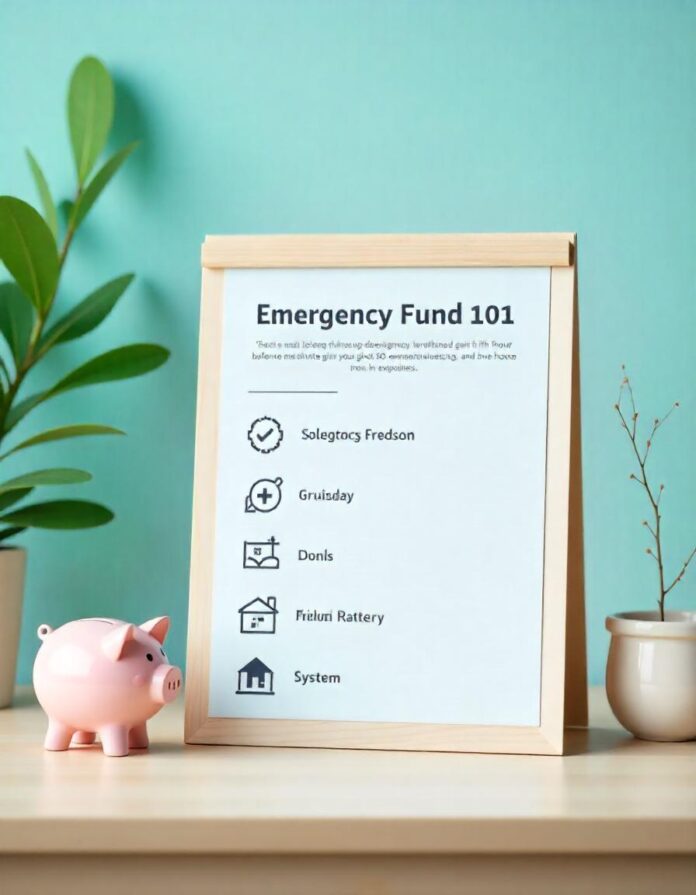There is need for provision of emergency fund 101.Since life is full of unexpected moments, from car repairs and medical emergencies to sudden job loss. Without a financial cushion, these surprises can quickly spiral into debt or financial hardship. An emergency fund acts as a safety net, giving you the confidence and stability to navigate life’s uncertainties.
This guide will walk you through the essentials of building an emergency fund, how much you should save, and the best tools and strategies to grow your financial buffer. To optimize your savings, we’ll also link to The Ultimate Guide to High-Yield Savings Accounts on Windetop.com—a must-read for creating a reliable, interest-earning safety net.
Why Do You Need an Emergency Fund?
An emergency fund provides peace of mind and financial resilience. It’s not a luxury but a necessity, ensuring you’re prepared for life’s curveballs without resorting to credit cards or loans.
Top Reasons to Have an Emergency Fund
- Unexpected Expenses: Medical emergencies, car repairs, or home maintenance.
- Job Loss: Cover essential expenses during unemployment.
- Peace of Mind: Reduce stress and focus on problem-solving during crises.
- Avoiding Debt: Prevent reliance on high-interest credit cards or loans.
How Much Should You Save in an Emergency Fund?
The ideal size of your emergency fund depends on your lifestyle, monthly expenses, and income stability.
1. Start with a Basic Goal
- Beginner Goal: Save $1,000 as a starting point for emergencies like car repairs or minor medical expenses.
2. Build to 3–6 Months of Expenses
Experts recommend saving enough to cover 3–6 months of essential expenses. This includes:
- Rent or mortgage payments.
- Utilities.
- Groceries.
- Transportation.
- Insurance premiums.
How to Calculate Your Goal:
- Add up your monthly expenses.
- Multiply by 3 (minimum) or 6 (ideal).
- Example: If your monthly expenses are $2,500, aim for $7,500–$15,000.You can read further to learn more about how to achieve a saving goal through emergency fund
Where Should You Keep Your Emergency Fund?
The right account for your emergency fund combines accessibility, safety, and growth. High-yield savings accounts (HYSAs) are the perfect option.
Why Choose a High-Yield Savings Account?
- Accessibility: Withdraw funds without penalties.
- Safety: FDIC or NCUA insured up to $250,000.
- Growth: Earn competitive interest rates, typically 2.50%–4.00% APY.
For a detailed breakdown of the best high-yield savings accounts, visit The Ultimate Guide to High-Yield Savings Accounts.
Steps to Build Your Emergency Fund
1. Set a Realistic Goal
- Start small: Aim for $1,000 as an initial target.
- Gradually increase your goal to cover 3–6 months of expenses.
2. Automate Your Savings
Set up automatic transfers to your emergency fund to ensure consistent contributions. Most banks allow you to schedule weekly, bi-weekly, or monthly transfers from your checking account.
3. Cut Unnecessary Expenses
Identify areas where you can trim your budget to free up money for savings. Common options include:
- Canceling unused subscriptions.
- Reducing dining-out expenses.
- Shopping smarter with discounts and cashback apps.
4. Redirect Windfalls
Use unexpected income like tax refunds, bonuses, or gifts to boost your emergency fund.
5. Track Your Progress
Regularly check your account balance to stay motivated and ensure you’re on track to meet your goal.
Infographic: How Much Should You Save in Your Emergency Fund?
Title: “Emergency Fund Savings Goals”
Visual Data:
- Step 1: Start with $1,000.
- Step 2: Save 3 months of expenses.
- Step 3: Build to 6 months of expenses.
- Pro Tip: Use high-yield savings accounts to grow your fund.
Create your infographic using tools like Canva or Piktochart for a visually engaging design.
Table: Best Places to Store Your Emergency Fund
| Account Type | APY Range | Accessibility | Safety | Best For |
|---|---|---|---|---|
| High-Yield Savings | 2.50%-4.00% | High | FDIC/NCUA insured | Emergency funds |
| Money Market Accounts | 2.00%-3.50% | Medium | FDIC/NCUA insured | Flexible savings needs |
| Certificates of Deposit | 3.00%-5.00% | Low (fixed terms) | FDIC/NCUA insured | Long-term savings (not emergencies) |
Pro Tip: Stick with high-yield savings accounts for emergencies due to their liquidity and safety.
FAQs About Emergency Fund 101
1. Can I Use My Emergency Fund for Non-Essential Expenses?
Your emergency fund should only be used for genuine emergencies, such as unexpected medical bills or job loss. Avoid using it for vacations or discretionary spending.
2. What If I Have Debt?
It’s a good idea to balance paying off high-interest debt and building a small emergency fund. Start with $1,000 before aggressively tackling your debt.
3. How Long Does It Take to Build an Emergency Fund?
The timeline depends on your income and savings rate. By automating contributions and redirecting windfalls, many people can save 3 months of expenses within 1–2 years.
Conclusion: Secure Your Financial Future with an Emergency Fund
An emergency fund 101 is an essential financial safety net, protecting you from life’s unexpected challenges. By starting small, automating savings, and using the right tools like high-yield savings accounts, you can build a fund that provides peace of mind and long-term stability.
For more tips on growing your emergency fund, start building your financial safety net today, and enjoy the confidence that comes with being prepared for whatever life throws your way.


